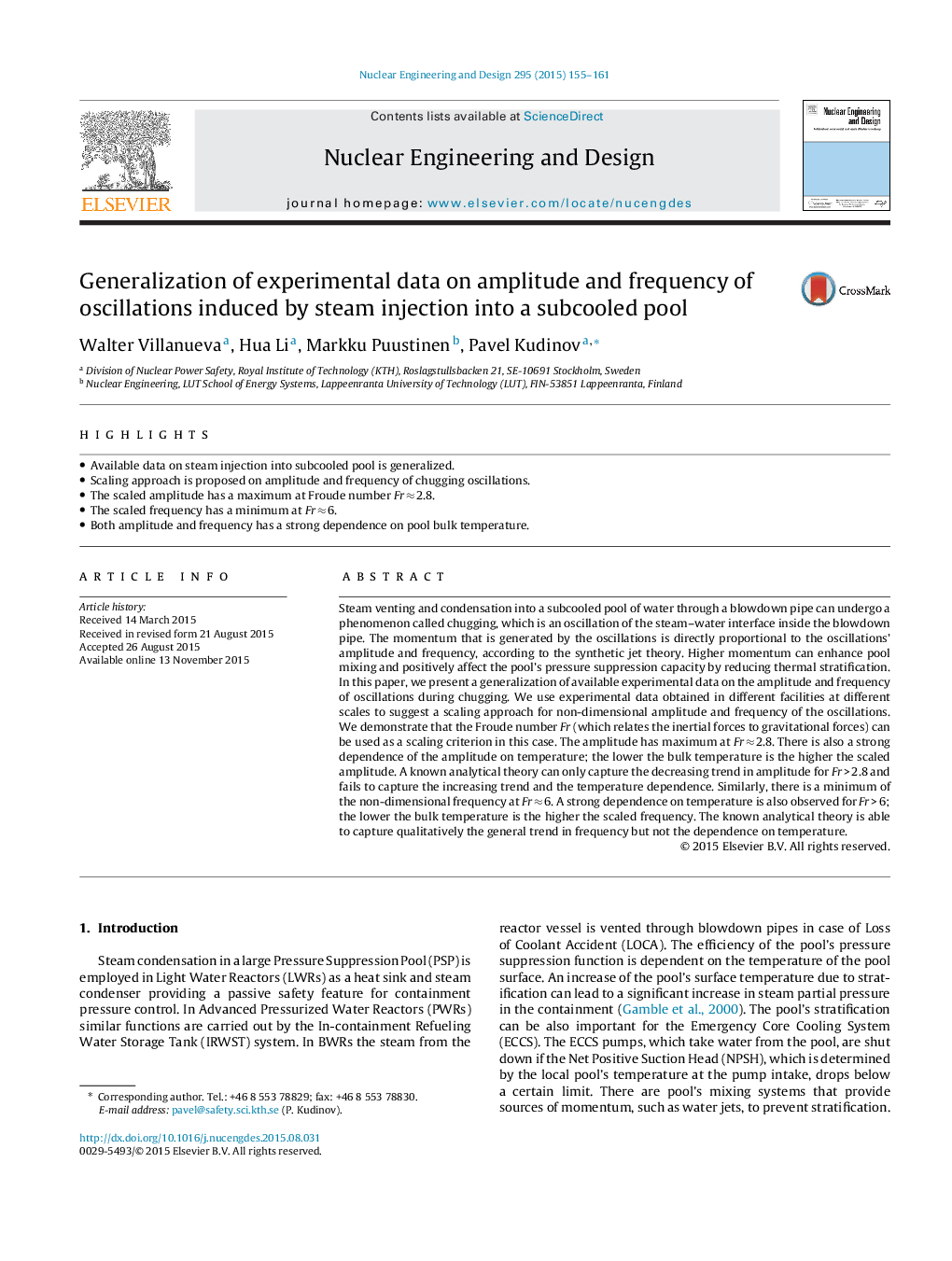| Article ID | Journal | Published Year | Pages | File Type |
|---|---|---|---|---|
| 6760617 | Nuclear Engineering and Design | 2015 | 7 Pages |
Abstract
Steam venting and condensation into a subcooled pool of water through a blowdown pipe can undergo a phenomenon called chugging, which is an oscillation of the steam-water interface inside the blowdown pipe. The momentum that is generated by the oscillations is directly proportional to the oscillations' amplitude and frequency, according to the synthetic jet theory. Higher momentum can enhance pool mixing and positively affect the pool's pressure suppression capacity by reducing thermal stratification. In this paper, we present a generalization of available experimental data on the amplitude and frequency of oscillations during chugging. We use experimental data obtained in different facilities at different scales to suggest a scaling approach for non-dimensional amplitude and frequency of the oscillations. We demonstrate that the Froude number Fr (which relates the inertial forces to gravitational forces) can be used as a scaling criterion in this case. The amplitude has maximum at Fr â 2.8. There is also a strong dependence of the amplitude on temperature; the lower the bulk temperature is the higher the scaled amplitude. A known analytical theory can only capture the decreasing trend in amplitude for Fr > 2.8 and fails to capture the increasing trend and the temperature dependence. Similarly, there is a minimum of the non-dimensional frequency at Fr â 6. A strong dependence on temperature is also observed for Fr > 6; the lower the bulk temperature is the higher the scaled frequency. The known analytical theory is able to capture qualitatively the general trend in frequency but not the dependence on temperature.
Related Topics
Physical Sciences and Engineering
Energy
Energy Engineering and Power Technology
Authors
Walter Villanueva, Hua Li, Markku Puustinen, Pavel Kudinov,
